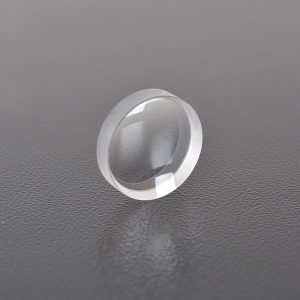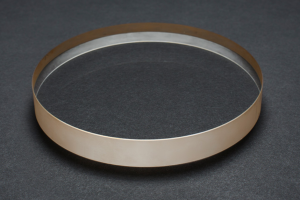
Beam Splitter Production Technology
The precision processing and coating technology of beam splitters determine the optical performance. The world’s top manufacturers Edmund Optics and Schott dominate the high-end market, and Chinese manufacturers are accelerating their rise. New materials and intelligent production are driving higher precision breakthroughs, enabling innovations in spectral analysis, laser technology and communications.
Beam splitters are an important optical component that is widely used in spectral analysis, laser technology, optical instruments and other fields. It can separate incident light according to wavelength, thereby realizing the decomposition and measurement of light. With the continuous development of optical technology, the demand for beam splitters is increasing, and the technical level and product quality of manufacturers directly affect their application effects. This article will explore the manufacturers of beam splitters in depth, analyze their technical characteristics, production processes and market applications.
1. Basic principles and classification of beam splitters
The working principle of beam splitters is based on the refraction and dispersion effects of light. When a beam of white light passes through a prism, light of different wavelengths is deflected to varying degrees due to different refractive indices, thereby forming a spectrum at the output end. According to the shape and material of the prism, the beam splitter can be divided into the following types:
1. Equilateral prism: The most common beam splitter, usually made of glass or quartz, has a high dispersion ability.
2. Abbe prism: It consists of two prisms and can achieve wider spectral separation.
3. Littrow prism: It achieves high-precision spectral separation by combining reflection and refraction.
2. Technical characteristics of beam splitter manufacturers
The production of beam splitter involves precision optical processing technology, and manufacturers need to have the following technical capabilities:
1. Material selection: The material of the beam splitter directly affects its optical performance. Commonly used materials include optical glass, quartz, calcium fluoride, etc. Manufacturers need to select suitable materials according to customer needs and ensure the uniformity and optical purity of the materials.
2. Precision processing: The processing accuracy of the beam splitter is extremely high, especially the angle and surface finish of the prism. Manufacturers usually use high-precision CNC machine tools and polishing equipment to ensure that the geometry and optical performance of the prism meet the design requirements.
3. Coating technology: In order to improve the transmittance and anti-reflection performance of the beam splitter prism, manufacturers usually coat the surface of the prism with multiple layers of optical films. The quality of the coating technology directly affects the optical performance and service life of the prism.
4. Detection and calibration: In the production process of the beam splitter prism, detection and calibration are essential links. Manufacturers need to be equipped with high-precision spectrometers, interferometers and other testing equipment to ensure that the optical performance of each prism meets the standards.
3. Application fields of beam splitters
Beam splitters are widely used in many fields, mainly including:
1. Spectral analysis: The beam splitter prism is the core component of the spectrometer, which can decompose complex optical signals into spectra of different wavelengths and is widely used in chemistry, biology, environmental monitoring and other fields.
2. Laser technology: In the laser system, the beam splitter prism is used to separate laser beams of different wavelengths to achieve the output and control of multi-wavelength lasers.
3. Optical instruments: Spectroscopic prisms are widely used in optical instruments such as microscopes, telescopes, and projectors for light decomposition and imaging.
4. Communication technology: In optical fiber communication, spectroscopic prisms are used to separate optical signals of different wavelengths to achieve multi-channel communication.
4. Market status of spectroscopic prism manufacturers
At present, global spectroscopic prism manufacturers are mainly concentrated in Europe, America, Japan, and China. Manufacturers in Europe, America, and Japan have technical advantages in the field of high-end optical components, and their products are widely used in scientific research and high-end instrument manufacturing. In recent years, Chinese spectroscopic prism manufacturers have developed rapidly, gradually occupying an important position in the low-end and mid-end markets, and gradually entering the high-end market.
1. European and American manufacturers: such as Edmund Optics in the United States and Schott in Germany. These manufacturers have leading advantages in material research and development, precision processing, and coating technology, and their products are widely used in scientific research and high-end instrument manufacturing.
2. Japanese manufacturers: such as Hoya, Ohara, etc. Japanese manufacturers have deep accumulation in optical glass and precision processing technology, and their products are known for high precision and high reliability.
3. Chinese manufacturers: such as Chengdu Guangming Optoelectronics, Shanghai Institute of Optics and Fine Mechanics, etc. Chinese manufacturers have made significant progress in optical materials, processing technology and testing equipment in recent years, and gradually occupied a place in the international market.
V. Future development trends
With the continuous advancement of optical technology, the application field of beam splitters will be further expanded, and manufacturers will face the following development trends:
1. High precision and high performance: With the improvement of scientific research and industry’s requirements for the precision of optical components, the production of beam splitters will develop towards higher precision and higher performance.
2. New materials and new processes: New optical materials (such as metamaterials, nanomaterials) and advanced processing technologies (such as 3D printing, nano-processing) will bring new breakthroughs to the production of beam splitters.
3. Intelligence and automation: With the development of intelligent manufacturing technology, the production of beam splitters will gradually realize intelligence and automation, improving production efficiency and product quality.
Conclusion
Being an important component in the field of optics, the technical level and product quality of its manufacturers directly affect its application effect. With the continuous advancement of optical technology, the production of beam splitters will develop towards higher precision and higher performance. In the future, manufacturers need to continue to innovate and improve their technology to meet the growing market demand.
Hanzhong Brisun Optics Co., Ltd. Is the high precision optical element manufacturer provides customized production of Various optical lenses, including spherical lens, cylindrical lens, optical window, mirror, prism, filter, metal base mirror and other high-precision optical elements. The base materials include various optical glass, fused quartz, calcium fluoride (CaF2), zinc selenide (ZnSe), germanium (GE), silicon (SI), sapphire, metal and other materials. And provide antireflective film, high reflection film, spectroscopic film, metal film and other optical coatings.
Welcome to OEM and Purchasing!


